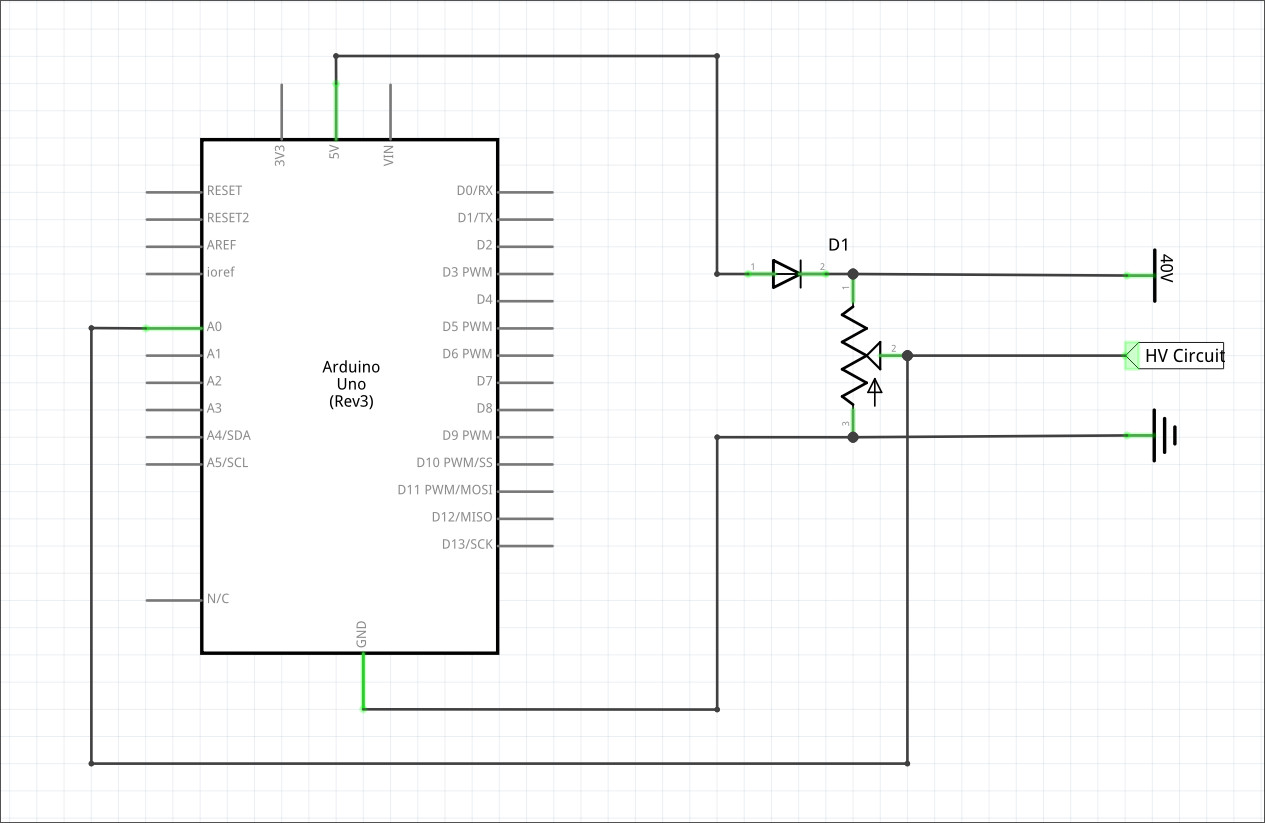I want to be able to read the value of a potentiometer in an existing high-voltage circuit externally with a microcontroller, but am concerned how the existing circuit would affect the Arduino and conversely how the Arduino could affect the existing circuit.
Here is my first idea for how a circuit could be constructed to measure potentiometer value in an already existing circuit:
My worry with this circuit is that the voltage going into the potentiometer from the already existing circuit would get shorted through the Arduino, frying it in the process.
My next idea was the addition of a diode to assure voltage would go across the potentiometer and not short through Arduino itself, but I still worry in such a circuit that the 5V supplied by the Arduino would get boosted depending on voltage across the potentiometer, frying the Arduino as well.
Will either of these circuits would work or is there a better way of going about measuring the value of a potentiometer in a given circuit externally?



